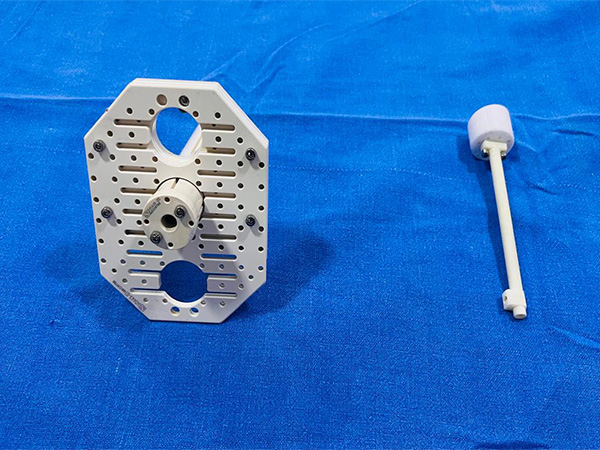Gurugram (Haryana) [India], July 4 (ANI): A private hospital in Gurugram has acquired a patent for its innovative Medanta Anterior Oblique Lateral Oblique (MAOLO) template. This device can help tackle tumours as large as 100c and even larger.
Dr Naresh Trehan, Chairman and Managing Director, Medanta said, “At Medanta, our foremost priority is the well-being of our patients. The MAOLO template exemplifies our dedication to developing high-quality medical technologies that improve patient outcomes. This patent is not just a milestone for Medanta, but a significant step forward for cervical cancer care in India. We will continue to innovate and provide solutions that cater to the needs of our community.”
“It has been conceptualised by Dr Susovan Banerjee, Associate Director, developed alongside Dr Tejinder Kataria, Chairperson, Division of Radiation Oncology, Cancer Institute, and the Medanta Medical Physics Team. The MAOLO can help tackle tumours as large as 100cc (cubic centimetres) and more, while the commercially available intracavitary applicators are known to be effective against tumours of 36cc or lesser in volume,” a statement released by the hospital said.
As per the statement released by Medanta, this innovation marks a significant improvement in the treatment of cervical cancer, which is the second most common cancer among women in India. Despite being 98 per cent preventable with vaccines and PAP smear test in the pre-disease stage, and 95 per cent treatable in early-disease stage, cervical cancer in India claims 2/3rd of all patients due to late-stage presentation when large and bulky tumours have spread to the lateral pelvic wall.
Brachytherapy, also called plesiotherapy, places the radiation source close to the tumour–on the skin’s surface, mucosa, inside the tissue or in the cavities. It uses a higher total dose of radiation to treat a smaller area than External Beam Radiation Therapy, which directs high-energy X-rays (radiation) at tumours from outside the body. Since the 1930s, Brachytherapy has been used to treat oral or tongue cancer, soft tissue sarcomas (for limb preservation) and cancer cervix with excellent results.
Dr Tejinder Kataria, Chairperson, Radiation Oncology, Cancer Institute, Medanta, said, “In India, the commercially available interstitial and intracavitary combo applicators are bulky, and have restricted reach. They need time, training and skill to assemble, as they come in multiple components and can only be applied by stitching to the patient’s skin, making them uncomfortable. They can also increase the duration of general and spinal anaesthesia, requirement for pain medication, and duration of admission.”
Dr Susovan Banerjee, Associate Director, Radiation Oncology, Medanta, explains the inspiration for the device. “The available applicators, in addition to being bulky and cumbersome, have an inadequate geometrical coverage for large disease volumes, leading to recurrences. Hence, we saw the need to design a new device that could provide a local solution to our clinical conundrum.”
“The MAOLO is a disk-shaped device that allows for the maximum possible number of catheters to be placed in three directions. This design makes it useful in addressing some of the largest tumours presented clinically. Improved technology of this single-piece template eliminates the need for assembly, makes it easy to use by technical staff and reduces the margin for error. Being cylindrical, MAOLO can be placed securely in the vagina making it more comfortable and eliminates adverse effects like major bleeding, pain, discomfort, or geometrical asymmetry (geographical miss), issues that can lead to abandon the procedure,” Dr Banerjee explained. (ANI)
Disclaimer: This story is auto-generated from a syndicated feed of ANI; only the image & headline may have been reworked by News Services Division of World News Network Inc Ltd and Palghar News and Pune News and World News
HINDI, MARATHI, GUJARATI, TAMIL, TELUGU, BENGALI, KANNADA, ORIYA, PUNJABI, URDU, MALAYALAM
For more details and packages
















